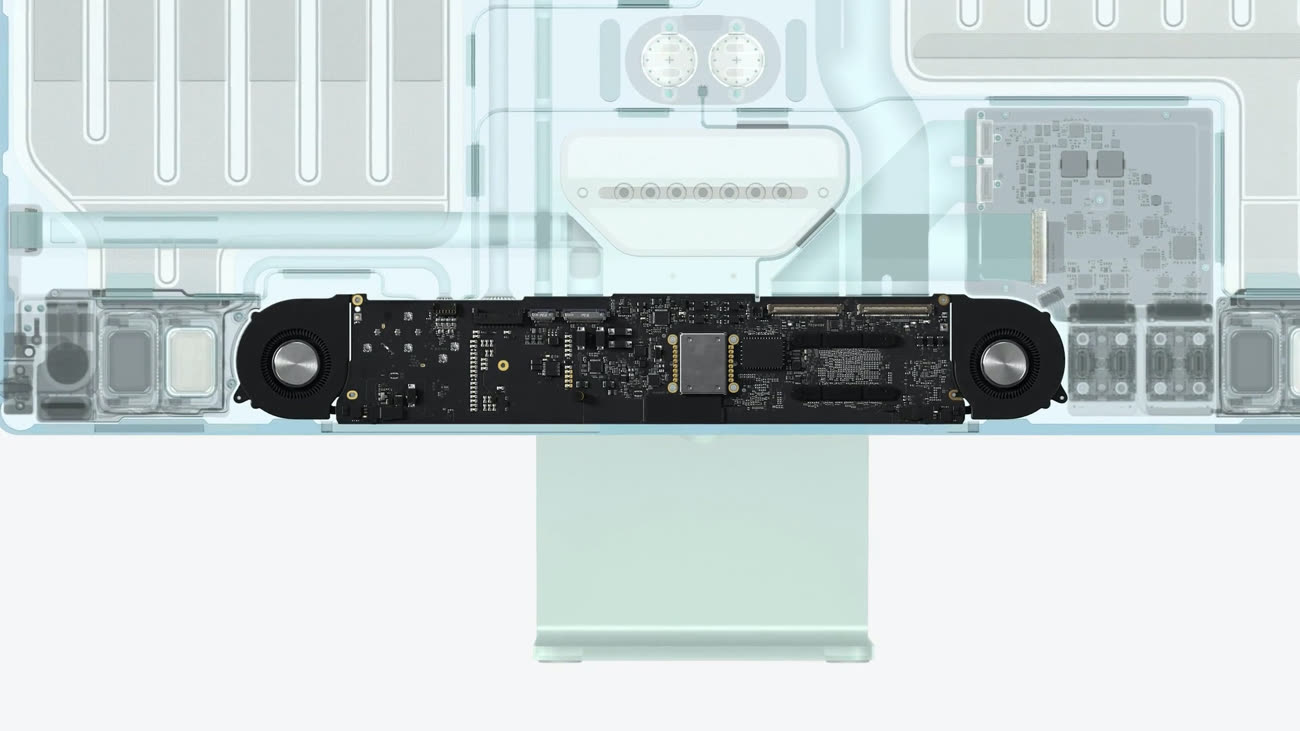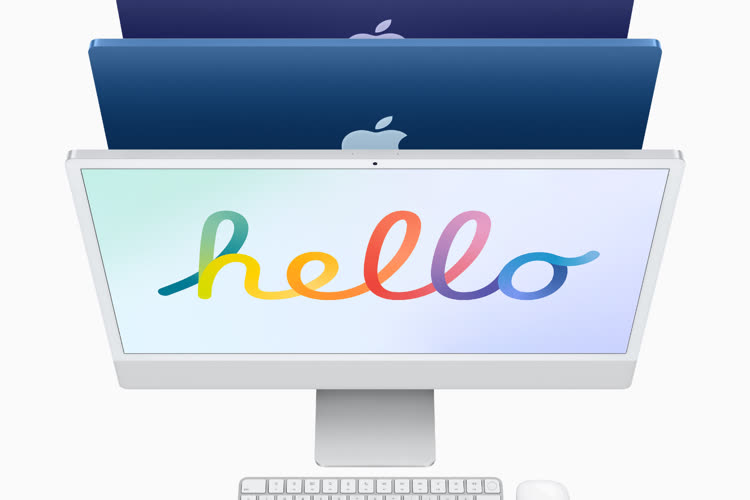The rumors were circulating about two new iMacs, the entry-level 24-inch model and the high-end 32-inch version. During yesterday’s special event, Apple actually introduced it The new 24-inch iMacBut we haven’t heard of the big model that will accompany it. However, don’t panic, the 32-inch iMac is expected to arrive in the next few months, and there is good reason to justify this two-step launch.

The 24-inch iMac is based on the internal Apple M1 chip, just like the Apple Silicon Macs launched last fall. In fact, Apple’s new all-in-one is a computer that is very similar to the Mac mini, MacBook Air, or MacBook Pro released a few months ago. The similarities do not end with the name of the system on the chip which integrates the processor, graphics chip, RAM, and all other components necessary for a computer to function well.
Even the motherboard, which includes all of these components, appears to have come out of the MacBook Pro M1, with two tiny fans on the side for hidden cooling. Apple hasn’t attempted to reinvent the wheel for the iMac, which can be summed up by saying it’s the motherboard of the MacBook Pro that sits on a 24-inch board. It’s a little more complicated than that, but it’s important to note how similar all the Mac M1s are.

Like the ones that happened in the fall, the new 24-inch iMac has the same technical limitations: at best 16GB of RAM and 2TB of storage, two managed displays at most (one internal and one external) and two Thunderbolt outputs only. This last point makes it possible to understand why the new computer has four USB-C sockets (except for entry-level), but only two Thunderbolts. This is not Apple’s stinginess, it is a limitation of the Apple M1.
It also explains why the 24-inch iMac was introduced only yesterday. Apple chose to make this model the primary iMac, as the iPhone 12 is the primary iPhone, which should be compatible with the majority of uses. The rumored 32-inch model could be called the “iMac Pro,” but it wouldn’t be physically bigger anyway. We can expect a more powerful and complete PC, which will support more RAM, provide more ports and handle more external displays.

Like the larger iPad Pro, we can also expect a different screen on the large iMac. Apple should choose a 6K board to maintain the same pixel density across the spectrum, but the screen will probably benefit from some advances in Pro Display XDR or the miniature LED technology leveraged on the larger tablet. It would be a good way to differentiate better between the two models even if the manufacturer would undoubtedly try not to disassemble its pro monitor too much.
For all these reasons, the 32-inch iMac won’t settle for the Apple M1, but should take advantage of Apple’s next chip, or a more powerful version of it. Whether it is the Apple M2 or the Apple M1X, the conclusion remains the same: this variant is not yet available and should not be for several months. The manufacturer is believed to be targeting a fall release of this new on-chip system that should also be used in the future 16-inch Apple Silicon MacBook Pro.
If you find the iMac introduced yesterday to be too small or incomplete enough, wait a little while: Apple hasn’t introduced its entire new lineup of iMacs.

“Professional food nerd. Internet scholar. Typical bacon buff. Passionate creator.”





